QuestionQUESTION: Good evening Dana.
Ive already asked one Expert, and Im hoping you can help!
Im trying to figure out the Genotypes for my baby rabbits to note them on a certificate for their buyers. Unfortunately, I cant get my head around the codes. Im not mathematically inclined.
Can you help?
The mum, Ena, is Black Otter Dwarf Lop, and the Father, Harley, is a Japanese Harlequin Dwarf Lop.
The babies came out with two black otters, one smokey grey with darker shading on his belly and sides, and seven Ruby-eyed Whites. Please help or point me in the direction of an expert who can!
Thanx,
Kate
ANSWER: Dear Kate,
There's a very good overview of rabbit coat color genetics here:
http://www.thenaturetrail.com/Holland-Lop-Genetics-Home.htm
I am not a breeder:
www.bio.miami.edu/hare/breeding.html
But I do teach genetics and am a rabbit rescuer, so can help to some degree here. But it may not be possible to determine the genotype of the babies if you don't know the genotypes of the parents. According to the site above, the black otter genotype is:
at- B- C- D- E-
Meaning that only the agouti locus has a recessive allele being expressed; all other five loci have at least one dominant allele present. This means we cannot determine the rest of Ena's genotype without more information.
The locus of interest here is the first one (the Agouti locus). A recessive mutation here will result in albino babies if two copies are inherited. This suggests that both parents are carrying the recessive albino allele of the Agouti locus. The albino allele interferes with the normal production of melanin, and will be epistatic over the other four gene loci, preventing their expression (no melanin, no color!).
If by "harlequin" you mean piebald (white patches), then this is controlled by a Piebalding gene locus. The piebald pattern is produced if the rabbit has two copies of the recessive allele at this locus, so the father is homozygous recessive here if you do mean piebalding.
That's really as far as we can go unless you know the precise genotypes of the parents. If you do, I can be of much more help.
Dana
---------- FOLLOW-UP ----------
QUESTION: Hi Dana.
My stud's geno is AA bb C_D_ejej
-chocolate ∓ gold. and my doe's geno is atatB_CCB_E_ as far as I can tell.
Hope this helps you help me :)
Regards,
Kate
AnswerDear Kate,
Given these genotypes, the babies could have the following genotypes at each of the five loci:
Agouti locus: All babies will be A at
Black/chocolate locus: If the mother is BB, then all babies will be Bb. If the mother is Bb, then 50% of the babies will be Bb, and 50% will be bb. You would be able to see which ones are bb because they would express the recessive chocolate form of the locus.
Color locus: All babies will be full-colored, as they will all be either CC or Cc. If the father is Cc, then 50% of the babies will be CC, and 50% will be Cc. If the father is CC, then all the babies will be CC.
Dilute locus: Since both parents are unknown genotype but expressing the dominant condition, there are three possibilities: DD x DD (all babies will be DD) OR DD x Dd (50% of babies will be DD, 50% will be Dd) OR Dd x Dd (25% will be DD, 50% will be Dd, and 25% will be dd)
Extension locus: If the mother is EE, then all babies will be E ej. If the mother is E ej, then 50% of the babies will be E ej, and 50% will be ej ej
Think that's complicated? Now put all those gamete possibilities into a Punnett square matrix, and given the genotypes of the parents (not fully known for either of them, as evidenced by the - for some of the loci), and you'll have a LOT of possible combinations!
*If the male is heterozygous* at the C and D loci, then he is capable of making the following gametes with respect to these five loci:
AbCDej
AbCdej
ABcDej
ABcdej
*If the female is heterozygous* at the B, D, and E loci, then she can make the following gametes with respect to these five loci:
atBCDE
atBCDe
atBCdE
atBCde
atbCDE
atbCDe
atbCdE
atbCde
So your matrix will have 32 squares, and your babies have 32 possible different genotypes. This is if the parents are heterozygous. If they are homozygous, there will be less diversity of gamete types.
Let me know if you don't know how to do a Punnett square, and I can help further. But it might not be possible to know the exact genotype of every baby.
Dana
Ab

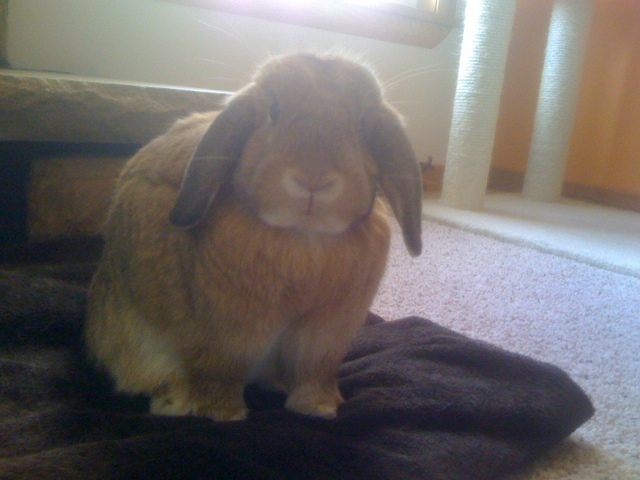 Holland Lop destroying house
Question
Horror
Hi, I have a female Holland Lop who is
Holland Lop destroying house
Question
Horror
Hi, I have a female Holland Lop who is
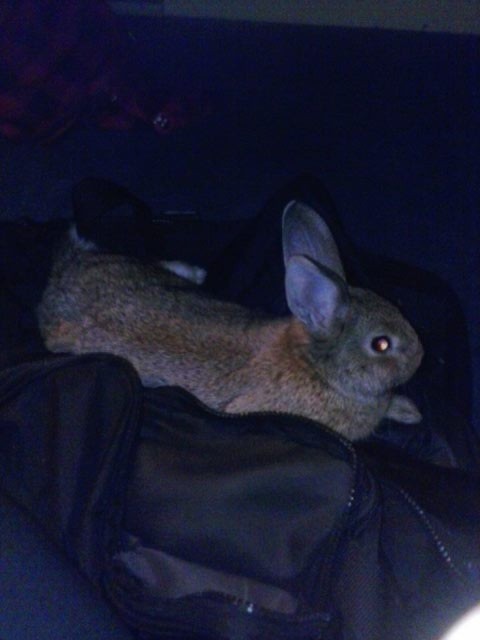 Help!
QuestionQUESTION: I have a six month old rabbit of an u
Help!
QuestionQUESTION: I have a six month old rabbit of an u
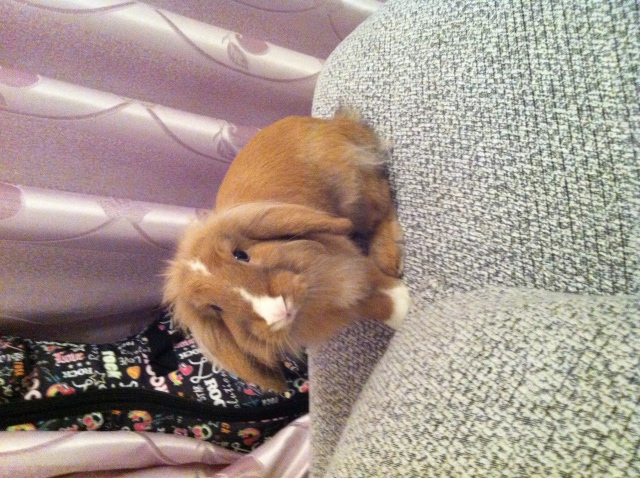 My rabbits diet
QuestionChocolate
QUESTION: Hi cat.. I have a mi
My rabbits diet
QuestionChocolate
QUESTION: Hi cat.. I have a mi
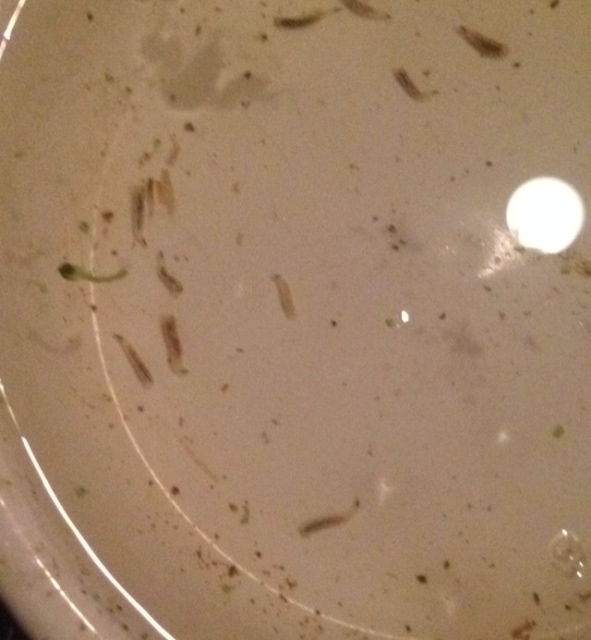 I found worms in my bunnies cage this morning!
Question
The worms I found in h
This morning I w
I found worms in my bunnies cage this morning!
Question
The worms I found in h
This morning I w
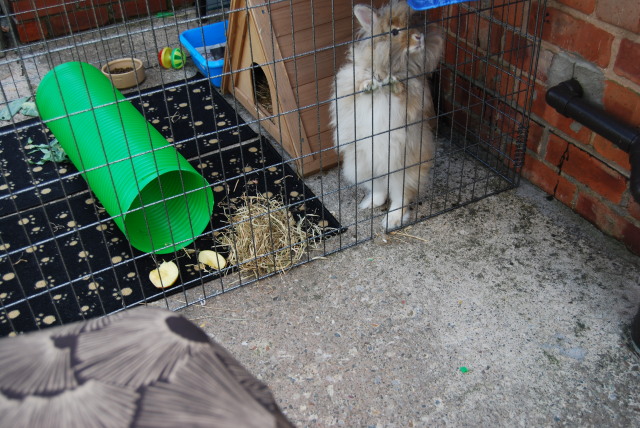 Lionhead rabbit
Question
Gizmo
I took my beautiful healthy six month ol
Lionhead rabbit
Question
Gizmo
I took my beautiful healthy six month ol